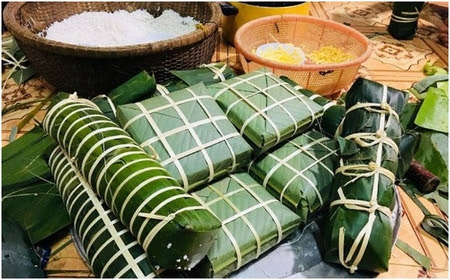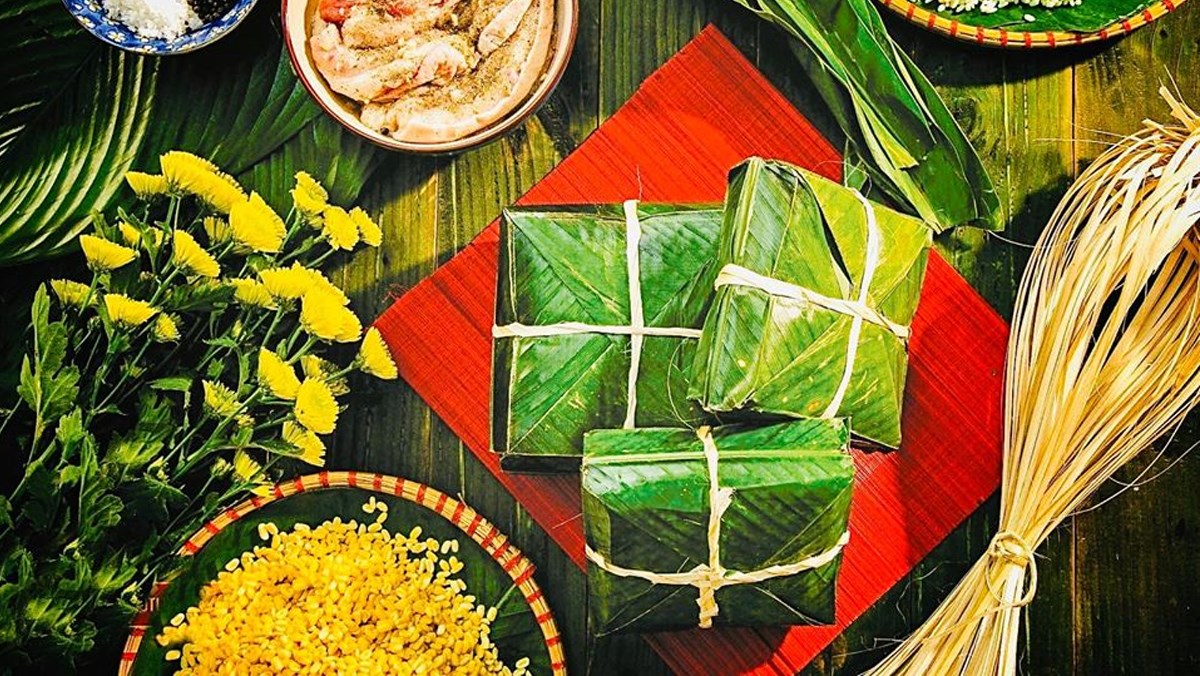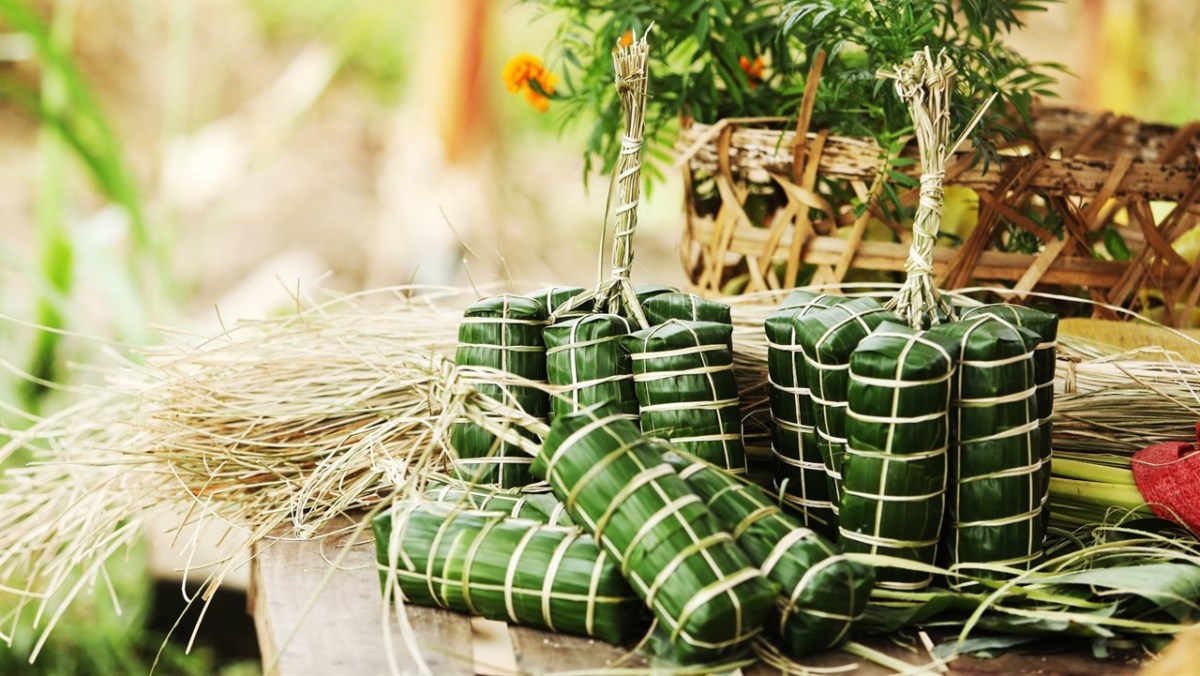Banh Chung and Banh Tet: Traditional Delicacies for the Tet Holiday in Vietnam
Every Tet holiday, the green Banh Chung and Banh Tet remind us of their significance as symbols of Vietnam’s national culture. These traditional cakes embody the quintessence of Vietnamese culture and the beauty of age-old customs, allowing each person to cherish this beloved occasion more deeply.

According to the legend of "Banh Chung, Banh Day," the origins of these cakes date back to the story of Lang Lieu during the reign of the 6th Hung King. On the occasion of the death anniversary of the Hung King, he summoned his sons, announcing that the son who presented the best gift would inherit the throne. While the other princes brought elaborate and exotic dishes to impress their father, Lang Lieu, the 18th prince, presented two cakes that were both unique and familiar: Banh Chung and Banh Day. Made from rice, a precious food bestowed by nature, these cakes soon became staples of our culture and are now essential during Tet celebrations.
The wrapping method of Banh Chung and Banh Tet is distinctive and unlike any other cakes from different countries. Banh Chung, with its square shape and attractive green color, symbolizes the earth. It consists of white sticky rice, green beans, and fatty pork, representing the bounty of the land. Every element of Banh Chung, from its meticulous wrapping to the careful selection of sticky rice and golden green beans, showcases the love and skill of those who make it. This cake embodies the wish for abundance, happiness, and prosperity; having Banh Chung during Tet reflects a family's desire for a prosperous new year.

Banh Tet, on the other hand, symbolizes love for the homeland, country, and family. This round, cylindrical cake is made from white sticky rice and green beans. Though it may seem simple, it offers nourishment and warmth to those far from home. Like Banh Chung, Banh Tet carries meanings of love, happiness, and the hope for a life of abundance and prosperity. This significance has earned both cakes a respected place in every holiday celebration.

In modern society, the tradition of wrapping and cooking Banh Chung has diminished. Many young people now prefer to buy ready-made cakes from markets or supermarkets, rather than taking part in the traditional art of making them. While families still honor their ancestors with Banh Chung and Banh Tet, the communal spirit of wrapping these cakes together has faded, leading to a less vibrant Tet atmosphere. As more youth become distracted by smartphones and technology, they rely on delivery services for their Banh Chung, often losing sight of the cultural significance behind the preparation of the cake.
Banh Chung holds great cultural significance as a dish for worshipping ancestors- a true emblem of Vietnamese identity during the Tet holiday. It not only represents a deeply symbolic aspect of the nation’s culture but also instills a sense of pride in Vietnamese people. The tradition of worshipping and enjoying Banh Chung during Tet is a fascinating aspect of Vietnamese culture, reflecting the culinary heritage that has persisted throughout history. Despite the fast pace and prosperity of modern life, it is essential to pass down the tradition of Banh Chung to future generations to preserve this beautiful custom in Vietnamese culture.
